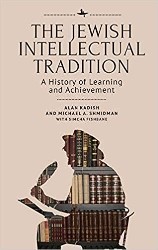Beautifully translated from the original Russian into English, Grigory Kanovich’s 1983 novel invites us to enter a richly imagined emotional landscape of Lithuanian Jewry — a subject that absorbed, even obsessed Kanovich over his long career as a novelist and memoirist of what was termed the “Litvak Saga.”
Born in 1929 in the small town of Jonava, near Vilna, Kanovich experienced the uprootings and displacements that have shaped much of the modern Jewish experience. After the Nazi invasion of Lithuania in June 1941, Kanovich and his family moved to Kazakhstan. He returned to Vilnius as a teenager following the war where his works were published and became popular among Soviet Jewish readers. These were readers who were seeking knowledge of an East European Jewish past that they’d been denied as a result of the Soviet repression of Jewish memory and religious practice.
Kanovich eventually immigrated to Israel in 1993, where he died about a year ago at age ninety-three. His work has received acclaim in Israel, in his native Lithuania, and internationally. Indeed, he is regarded as one of the last Jewish writers shaped by and connected to the lost world of pre-Holocaust Jewry.
In all his writings, Kanovich sought to recover the vibrant shtetl world of his Litvak childhood. He viewed his literary mission as “a monument to the memory of the Lithuanian Jews.” The Tears & Prayers of Fools succeeds in this respect, conjuring up a premodern shtetl, circa 1880, that’s filled with memorable characters — characters who recall the tales of earlier canonical authors like I. L. Peretz and Sholem Aleichem. Presiding over Kanovich’s imagined shtetl is Rabbi Uri. The narrator describes him vividly:
Rabbi Uri sat down at the table and clasped the soot-covered lamp. Heat poured out and spread through his joints, which had withered like tobacco stems. The warmth squeezed through his dry veins, moving up toward his stooped shoulders, up to his neck, which resembled a Torah scroll worn out from reading, and from there back to his heart, to his sick soul. And as a butterfly unfolds its wings, his soul spread out and soared toward the windowsill. High, so high.
Rabbi Uri is entangled with a skein of striking characters, Jews and non-Jews, whose histories each involve loss, bereavement, suicide, sexual desire, and, above all, a longing for connection. Like the rabbi, Kanovich’s characters dream of soaring; they seek a higher spiritual realm “in order to cleanse the soul of bitterness, enmity, and mistrust.”
At the core of Kanovich’s novel is the disrupting presence of a mysterious stranger, a wanderer with a velvet yarmulke that’s pinned with a clip. This “strange, spell-binding” character unsettles the community. Described as “fragile, small and decrepit,” a liminal figure “drowning in sorrow,” the stranger takes on the sins of the community. He’s a scapegoat for the shtetl’s many fallen, haunted inhabitants.
Who is this stranger? While he seems to appear out of nowhere, Kanovich is careful to give readers his protagonist’s tragic backstory — a tale of unimaginable personal loss. As a result of this tragedy, “something inside him split into pieces.” A shoe cobbler who seeks to reunite with his drowned firstborn son, the stranger “had a striking ability to transform everything around him … He could easily turn reality into dream and dream into reality, and these transformations nourished him.”
In the end, Kanovich magically restores the world of his Lithuanian childhood. His profoundly Jewish literary imagination alleviates the pains of real-world history. Rather than chanting a solemn Kaddish for the departed, The Tears & Prayers of Fools establishes a site of Jewish memory, creating a sacred space in which fools can still dream of reanimating their dead.
Donald Weber writes about Jewish American literature and popular culture. He divides his time between Brooklyn and Mohegan Lake, NY.





